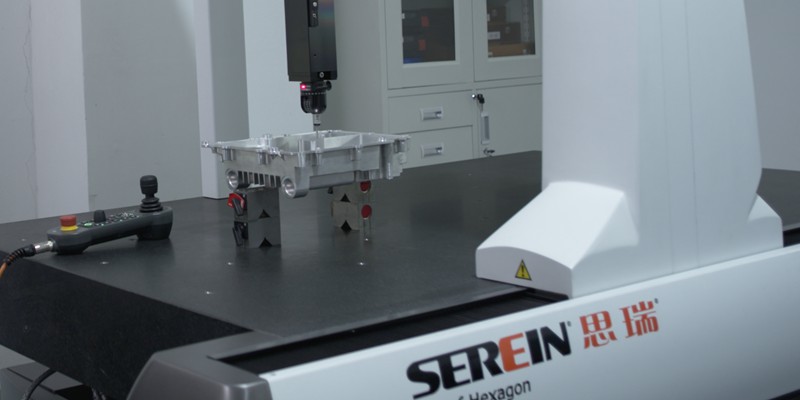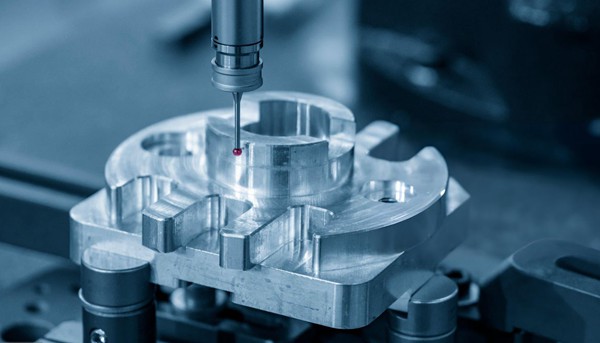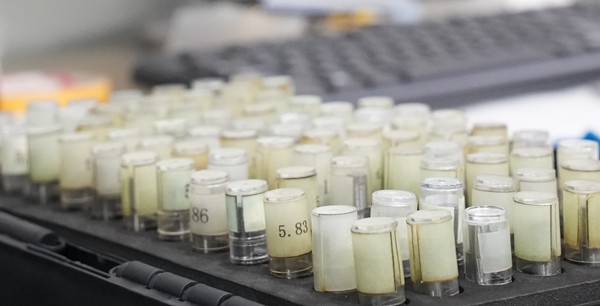
Compared to traditional manufacturing, CNC machines have a low probability of errors. With high-quality programming and an experienced operator, this machine's error probability can be less than 1%, which further explains the growth of the CNC machining industry.
However, precision cannot always be guaranteed even with CNC machines, as constant quality controls are required to detect deviations and even micrometric errors. In this article we will discuss quality control technologies and methods for CNC machining.
What is quality control in CNC machining?
Quality control in CNC machining is a process that uses instruments and techniques that ensure a high-quality result that meets industry standards and regulations. It is one of the key factors for a successfully manufactured product.
At the same time, the main objective of quality control is to minimize errors through identification and definition. Lack of quality control can result in parts being scrapped, resulting in thousands of dollars in losses.

Quality control parameters in CNC machining
CNC machines rely on crucial parameters such as computer instructions and raw material quality to achieve precision and ensure all parts fit together, creating a perfect product that satisfies customers.
Dimensional accuracy and tolerance
Dimensional accuracy is a term used to compare the strength of compatibility between the planned and actual dimensions of the result. Tolerance refers to a specifically permitted amount of deviation from planned dimensions. For example, if the tolerance is ±0.002 and we have a part that is 3.000 inches in diameter, acceptable diameters are 2.998 inches to 3.002 inches.
If you are working on a part without a specific tolerance, you can use international tolerance standards of +/-0.1 mm.
Surface texture and roughness
The surface of the machined parts describes the quality and precision of the CNC machine itself. It is measured with a laser scanner based on roughness in micrometer precision, where the standard roughness of a CNC machined surface should be 125 μin.
Assembly and adjustment
The machined parts must be assembled and fitted perfectly to show the result of dimensional accuracy. The parts must be synchronized with each other to form a functional product.

Industry Standards and Regulations for Quality Control in CNC Machining
There are three common quality control standards in the machining industry.
ISO 9001 Certification
Published by the International Organization for Standardization (ISO) in 1987, ISO 9001 is one of the best-known and most widely used quality management systems. It aims to help companies meet their customers' expectations and maintain the quality of their products.
ISO 16949
It is also a quality management standard focused on the automotive industry that provides a framework to minimize material waste in supply chains and ensure a high level of safety.
AS9100
This is complemented by the AS9100, developed in 1999 and aimed specifically at the aerospace industry. This management standard requires more rigorous product control compared to other quality management systems.

What steps are required in quality control and inspection?
Machined parts require constant quality control and testing. Therefore, it is mandatory for manufacturers to follow the following important steps.
Inspection of raw materials and tools
Raw materials are one of the most important and first inspections to be carried out. These inspections can be carried out upon receipt of the raw material, visually inspecting it to ensure that the packaging is undamaged, the surface is completely smooth and the dimensions meet project requirements. Also make sure that there are no errors in the centering and movements of the tool, e.g. B. in the movement capacity of the rotary and linear axis.
First Article Inspection (FAI)
A process of verifying that a new or recently modified product meets manufacturing specifications, dimensional characteristics, and quality requirements. The FAI can also validate that the product meets standards and regulations such as ISO9001.
Nowadays the FAI no longer requires complex bureaucracy. Instead, there is software, like Net-Inspect's software, that allows for instant verification and reduces FAI rejection.
Verification during processing
In-process inspection takes into account all manufacturing details during the production process, checking the parameters of each part to ensure that all requirements and standards are met.
final check
The final inspection phase ensures that machined parts meet quality standards and dimensions before being assembled with other parts to form a complete product. To this end, the details of the manufactured parts are meticulously checked. Coordinate measuring machine is generally used.
Assembly and fit test
After ensuring that all manufactured parts meet quality standards, the assembly phase follows. The manufacturer puts all the pieces together. It is then checked whether the products meet geometric tolerances. All parts must be coordinated with each other to ensure the benefit of the product.
Statistical Process Control (CEP)
Using static processes to control and manage CNC machines during work helps manufacturers detect deviations or errors, ensuring a high-quality CNC machined part. With Qualis 4.0, CEP software will be able to facilitate this task, offering advanced analytics and high tracking performance.

Tools and methods for inspection in CNC machining
Different tools and methods can be used to inspect CNC milled parts.
Tools for measuring dimensions and tolerances
CNC machine manufacturers demand precision and dimensional accuracy. These tools include modern and traditional ones.
- Coordinate Measuring Machines (CMM): A CMM is a powerful measuring device that uses a contact probe to define random points on the measuring surface. It uses touch trigger or laser scanner technology to create a digital plan of the part and take precise measurements. To use a CMM, you must be familiar with using CAD models to compare measured data to the intended design.
- Traditional measuring tools: To measure CNC machined parts, we can also use traditional tools such as calipers and micrometers, which are easy-to-use and valuable tools in dimensional measurement.
Checking surface quality
Testing the surface of the machined part guarantees its quality and functionality. Several techniques can be used for surface inspection, such as visual inspection, one of the simplest and most efficient techniques, and eddy current inspection.
Hardness Testing Devices
If the hardness of the material is unknown, it must be tested to ensure it meets hardness requirements. There are many techniques you can use in stress testing, such as: B. Brinell and Vickers.
Visual inspection
Visual inspection can be one of the most efficient inspection methods, but it requires a manufacturer who is highly experienced and proficient in using tools such as endoscopes and microscopes to check all parts of the product, especially angles, holes and geometric tolerances, and compare them. with technical drawings.
WayKen ensures strict standards for your CNC machining projects

Concluding
The key to any successful manufacturer is product quality. This requires carrying out quality controls and testing on all parts of the manufacturing process. It is also necessary to stay up to date with current technologies and testing methods, using the latest tools available.

























































